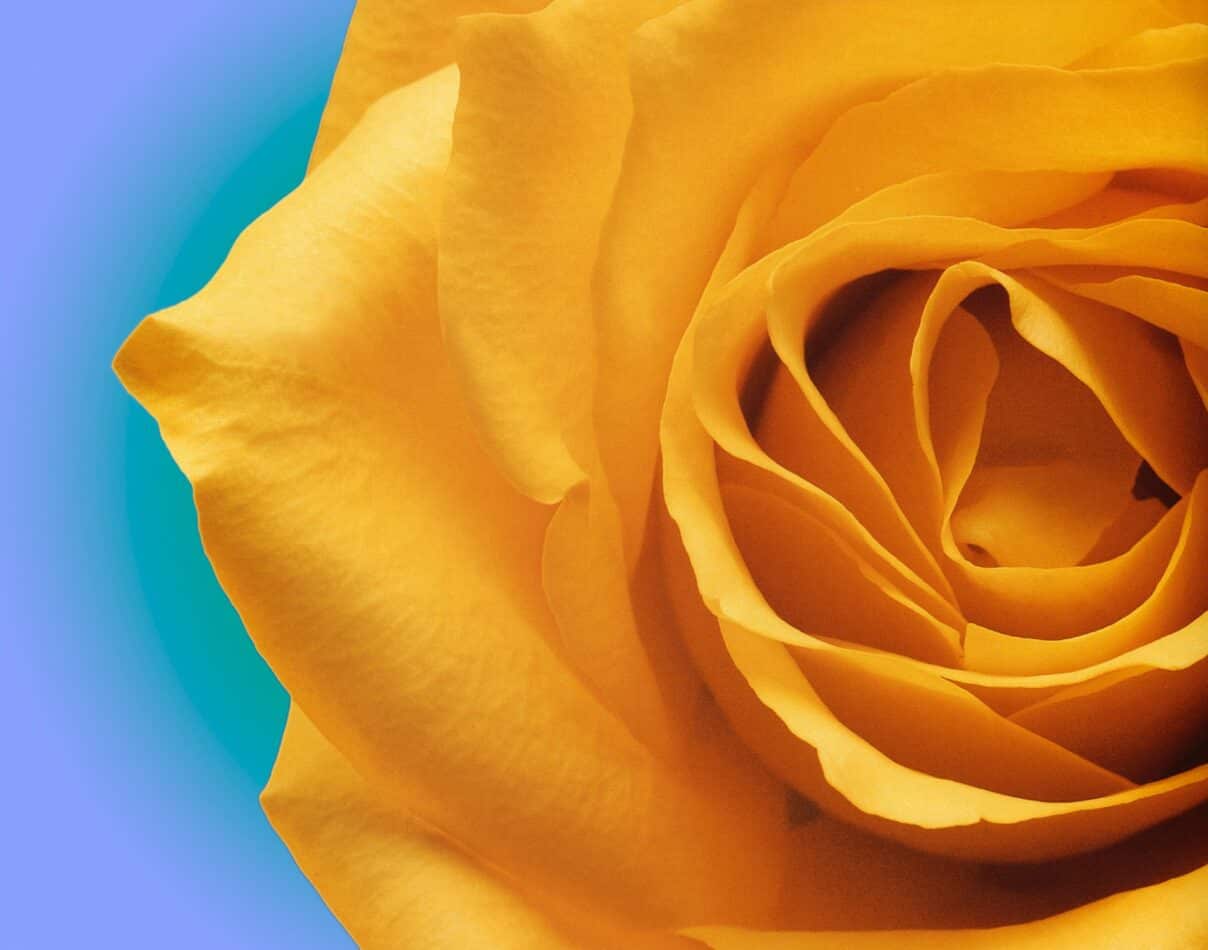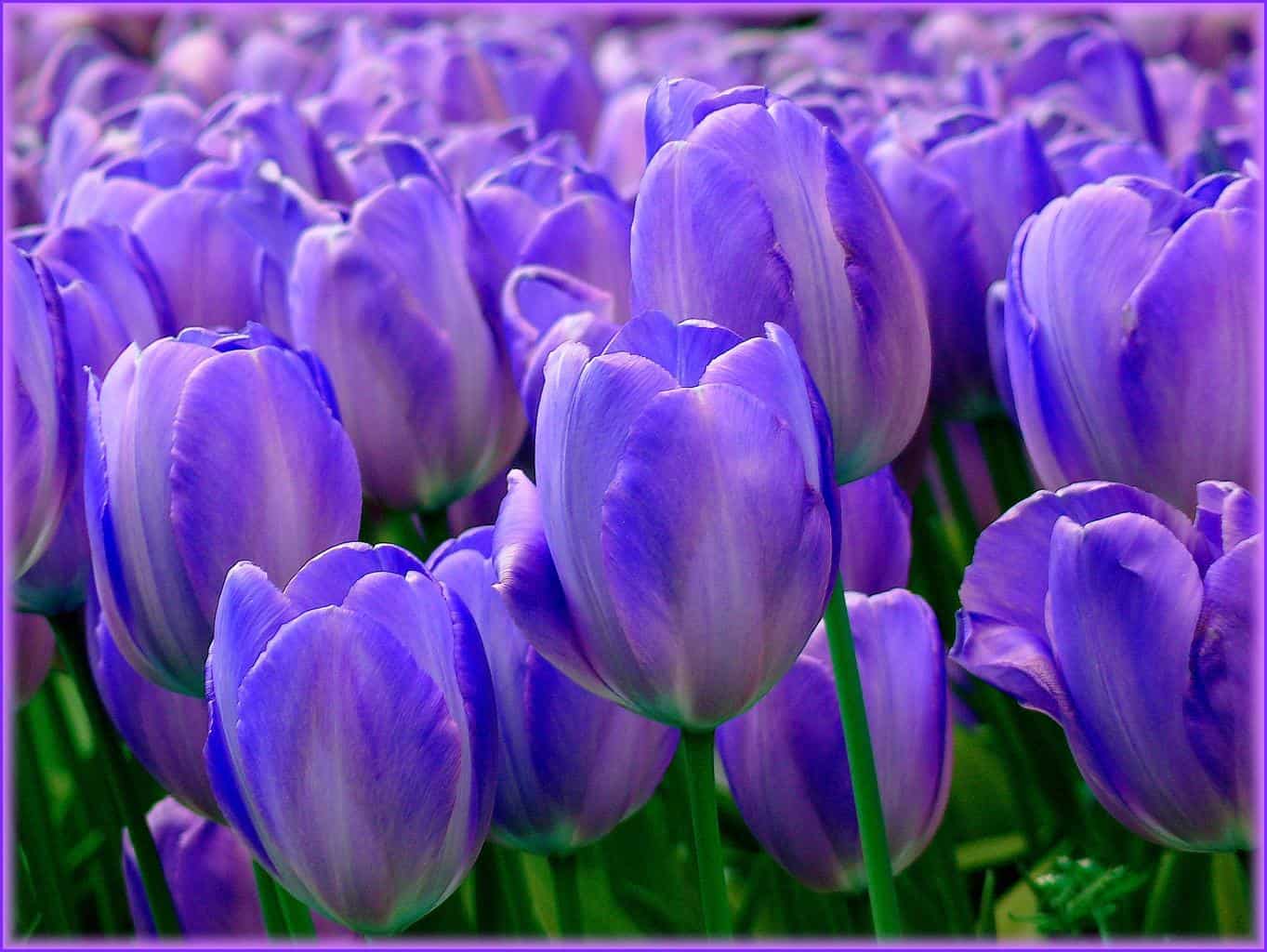English Lavender or Lavandula angustifolia is one of the best-known and most pleasant-smelling of the lavenders. The Lavandula genus belongs to the Lamiaceae family of plants, commonly known as the mint family. This bushy shrub consists of aromatic, gray-green leaves and long stems that support short, dense spikes of fragrant, pale to deep purple blooms in summer. English Lavender is a perennial, meaning it will live for several years and bloom year after year.
Etymology
The family name for English Lavender is derived from the Latin word “lavare” meaning “to wash”. It is believed that the plant was used for cleansing and scenting baths in ancient Rome, thus earning it the name lavender. The species name “angustifolia” is derived from Latin, meaning “narrow leaves”. It refers to the narrowness of the leaves of English Lavender.
Meaning and Symbolism
English Lavender is a symbol of healing, protection, love, femininity, and elegance. The flower is often associated with growth, revival, and purity. In the language of flowers, it is said to denote luck, devotion, and serenity.
History, Mythology, and Religious Significance
English Lavender has a long history of religious and cultural significance. In ancient Greece, it was used in temples for both religious ceremonies and as incense to ward off evil spirits. The Romans used English Lavender to purify public baths and scent their clothing, while Middle Age monks prepared lavender-scented oils that were used to treat physical and mental ailments. The flower appears in various ethnic stories and legends, and during the medieval period it was used to protect people and their homes against the plague.
Nowadays, English Lavender is often used in weddings and special occasions. It is used as a traditional part of herb bouquets, as well as in potpourri and aromatherapy.
Flower Varieties and Defining Characteristics
English Lavender has various varieties with different branches and leaves, as well as different hues of flowers.
- Lavandula stoechas is commonly known as French or Spanish Lavender. It has stout bushier growth and small grey-green leaves. Its flowers are purple, pink and rose with spotted bracts. It is better suited to warmer regions.
- Lavandula angustifolia or English Lavender has smaller, slender leaves and stems and is generally bluer than other varieties. It produces tall flower stems with large, fragrant flowers.
- Lavandula latifolia or Portuguese Lavender is similar to English Lavender and is ideal for heatier climates. It has medium-sized grey-green leaves and tall spikes of blue or purple flowers.
- Lavandula x intermedia or Hybrid Lavender is a hybrid of Lavandula angustifolia and Lavandula latifolia. It has a good scent, medium-sized grey-green leaves, and tall spikes of lilac-like flowers.
- How to Plant and Grow
How to Plant
English Lavender is an easy-to-grow and rewarding flower. Plant in an area that receives full sunlight in well-drained soil. It prefers slightly alkaline soil with a pH between 6.5 and 7.5. Water regularly during the first few weeks to ensure that the root system takes. Once the plant is established, reduce watering and allow the top 3–4 inches of soil to dry out before watering again. In areas with hot summers, it is important to water in the evening hours to keep the plant from drying out too quickly.
How to Fertilize
Fertilize lightly with a balanced fertilizer once every 6–8 weeks during the growing season. Cut back the plant every spring to encourage healthy new growth. English Lavender can tolerate mild frost, but more severe weather conditions should be avoided.
How to Pot and Repot
English Lavender should be potted in containers with adequate drainage holes. Choose a pot that is 2–3 inches larger than the current pot. Place a 2–3-inch layer of gravel or pebbles at the bottom of the pot, then add potting mix on top. Plant the lavender into the soil and firm with your hands. Add water until the soil is moist to the touch, then drain out any excess water.
Repotting lavender every two to three years will encourage healthy growth. To repot, remove the lavender from its old pot, being careful not to damage the roots. Once in its new pot, fill the pot with potting mix and water the lavender.
How to Prune
Pruning lavender is important for preventing it from becoming sparse and unkempt. Prune about one-third of the plant in late winter, just before its new growth begins.
When pruning, look for stems that are thicker in the middle or have more foliage than the surrounding stems. Cut the stems back at a 45-degree angle, about 2 inches above the start of new foliage. Cut any crisscrossing branches, as well as any spindly or overly long branches.
Additionally, remove any spent blooms once they are finished flowering. This will help to ensure that your lavender stays healthy and vibrant.
How to Propagate
English Lavender can be propagated by cuttings or division. Cuttings are most commonly taken in the spring, while division is best done in the fall.
When taking cuttings, cut off a 6-inch long stem below the leaf nodes, using pruning shears. Remove the lower leaves, dip the end of the cutting in rooting hormone, and lightly tap off any excess. Place it in moist sand or other rooting medium and cover with a plastic bag. Place the bag in a bright room where temperatures are between 65-75 degrees Fahrenheit. After 8–10 weeks, the cutting should have root growth, at which point it can be planted in soil.
Division can be done in the fall after the flowers have finished blooming. Carefully dig around the perimeter of the plant, then pull apart the roots gently. Plant each division in individual pots and ensure they are watered, then place them in bright, indirect sunlight.
Common Pests and Diseases
English Lavender is generally pest and disease resistant, however, it can be susceptible to aphids and flea beetles. To prevent damage, check the plant often for infestations and use an insecticidal soap to eradicate any pests. If the problem persists, contact your local extension office for advice.
English Lavender can also be prone to molds, root rot, and spider mites. Avoid overcrowding lavender plants, as this can lead to molds and fungi. Ensure proper drainage and adequate ventilation, and reduce watering if the plant seems to be at risk of root rot. Spider mites can be prevented with a gentle water spray throughout the growing season.
Frequently Asked Questions
Q: Is English Lavender considered an herb?
A: Yes, English Lavender is an herb that can be used in cooking and is also used as an essential oil in aromatherapy.
Q: Does English Lavender attract butterflies?
A: Yes, English Lavender attracts butterflies and other beneficial pollinators.
Q: Does English Lavender require much maintenance?
A: No, English Lavender is a low-maintenance plant that doesn’t require much effort or care. Pruning back the plant in late winter and occasional fertilizing are usually all that is needed to ensure healthy growth.
Fact Sheet
| English Lavender | Lavandula angustifolia |
| Family | Lamiaceae |
| Plant Type | Perennial |
| Mature Size | 3 – 4 feet tall, 2 – 4 feet wide |
| Sun Exposure | Full sun |
| Soil Type | Well-drained, slightly alkaline |
| Soil pH | 6.5 – 7.5 |
| Bloom Time | Early to mid-summer |
| Flower Color | Pale purple to deep purple |
| Hardiness Zones | 5 – 9 |
| Native Area | Mediterranean |
What we love from Amazon this week
Buy these wonderful flowers directly from Amazon:















